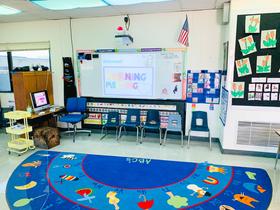Personalized Learning: Revolutionizing Education for the 21st Century
In an era of rapid technological change, evolving student needs, and rising expectations for equity and relevance in schooling, personalized learning has moved from a promising trend to a central pillar of innovation in K-12 and beyond. As we step into 2025, educators, parents, and policymakers confront both unprecedented opportunity and complex challenges in realizing genuinely individualized learning at scale.
This article updates and expands upon earlier thinking, drawing on the latest data, policies, and real-world models to explore how personalized learning is transforming education today.
What Is Personalized Learning — and Why It Matters
At its core, personalized learning refers to instructional approaches that tailor content, pace, and support to individual learners’ strengths, interests, and needs. Rather than a one-size-fits-all curriculum, it adapts to students’ performance in real time, often using data, assessments, and adaptive technologies to guide progress and interventions.
Key components include:
Student agency and voice, allowing learners to co-design their paths
Flexible pacing, ensuring mastery rather than seat time
Multiple modalities and pathways, from project-based work to micro-lessons
Continuous feedback loops and assessment, adjusting instruction as learning unfolds
Personalized learning aims not only to boost achievement but also to foster engagement, ownership, and a deeper alignment between schooling and individual potential.
The 2025 Landscape: Trends, Scale, and Innovation Market Growth & Adoption
The personalized learning market continues its steep trajectory. Forecasts suggest it will grow from about USD 4.74 billion in 2024 to nearly USD 6 billion in 2025, at a compound annual growth rate of ~25.7 %. The Business Research Company Some analysts even frame part of this movement as “hyper-personalized learning,” reflecting increasingly granular adaptation powered by AI and analytics.
In school systems across the U.S. and internationally, adoption of adaptive platforms, data dashboards, and AI-infused tools is now widespread. One survey found that a majority of educators report using AI tools in class planning or differentiation. Digital Learning Institute+1
In higher education, 57 % of institutions are prioritizing AI in 2025 — up from 49 % the year before — signaling a shift toward more style="text-decoration-line: none;"> Workday Blog
Evidence of Impact
While early adopters cited engagement gains, more rigorous data is now emerging. A recent large-scale randomized trial through the Personalized Learning Initiative (PLI), involving over 16,000 students, showed that supplementing instruction with “high-dosage tutoring” in math/reading produced gains of 0.06–0.09 standard deviations — roughly 1 to 2 additional months of learning.
Other sources report that 76 % of teachers believe personalized learning boosts engagement and performance. Some case-based reports claim score improvements of up to 30 % over traditional classrooms following intensive personalization. enrollify.org
In eLearning contexts, 59 % of studies find that adaptive personalization improves academic outcomes.
Still, results vary widely, depending on fidelity of implementation, support systems, and equity of access.
Technology, AI, & the Next Frontier
The rise of generative AI and adaptive engines is accelerating the sophistication of personalized learning. In 2025, AI systems can not only adjust lesson difficulty but proactively predict learning trajectories, flag misconceptions, and generate scaffolding materials. eLearning Industry+2eLearning Industry+2
One striking emerging model is Alpha School, an AI-powered private school opening campuses across the U.S. The model devotes two hours a day to core academics driven by adaptive apps; students then spend the rest of the time developing life skills. In Tampa, the tuition is USD 40,000 for K–8. Another campus in Virginia plans to charge USD 65,000, with minimal traditional instruction and AI “guides” supervising — a provocative experiment in redefining schooling.
While such models are controversial, they reflect the ambition driving personalized learning: to rethink not just content delivery, but the structure of the school day.
Policy & Educational Ecosystem in 2025 Funding, Equity & Access
One persistent barrier to wide-scale personalization is unequal access to technology, professional development, and high-quality content. Without intentional policy, personalization can exacerbate equity gaps.
Federal and state policies are increasingly encouraging investments in adaptive systems, data infrastructures, and blended learning grants. Some grant programs now require equity-based metrics in awarding funds.
Districts often adopt phased implementation, with pilot cohorts and cross-school scaling, allowing refinement before expansion. Early involvement of teachers, parents, and students is crucial to secure buy-in.
In larger systems, central offices are building analytics teams, instructional coaches, and “teacher data support” roles to help translate insights into practice.
Accreditation, Accountability, & Assessment
As models deviate from standardized pacing, accountability systems must evolve. Many districts now use competency-based progression and progress-based dashboards rather than rigid seat-time metrics.
State accountability systems in some jurisdictions now permit hybrid models combining personalized growth metrics with traditional standardized assessments. This hybrid approach aims to preserve comparability while encouraging innovation.
Many private and boarding schools experimenting with personalization are also adjusting admissions and scholarship policies to reward growth as well as static metrics. (See related insights on PrivateSchoolReview.com regarding private school innovation.)
Workforce & Professional Learning
Teachers are pivotal to successful personalization. Many fear being replaced by algorithms; others embrace enhanced capacity. But consensus is emerging: effective personalization supplements, not supplants, human guidance.
To that end, many districts and state agencies are launching AI-in-education training hubs and professional development programs. For example, the American Federation of Teachers (AFT), supported by Microsoft and OpenAI, has launched a $23 million AI training hub to equip educators with skills for integrating AI tools ethically and strategically.
Coaching, instructional design support, and communities of practice are increasingly standard parts of rollout plans.
Real-World Models & Success Stories Blended Personalization in Public Schools
In a midwestern district, a blended model allowed students to rotate through teacher-led, small-group, and adaptive learning stations. Over two years, reading proficiency increased by 8–10 percentile points, with attendance up 5 %.
Another example comes from a charter network that integrated real-time dashboards and teacher dashboards. Teachers used that data to group students dynamically, shifting group composition daily. The network reported a 12 % increase in course completion and a drop in failures.
Independent & Boarding Schools as Innovation Hubs
Some boarding and independent schools are piloting micro-credentialing, self-paced modules, and learner portfolios built into advisory programs. One boarding school in New England introduced a “personal inquiry pathway” in which juniors and seniors pursue bespoke projects with mentor support — blending personalization with deep inquiry.
These schools often serve as testing grounds for practices later adopted by larger districts (hence the relevance to BoardingSchoolReview.com audiences).
A few elite schools now leverage AI tutors in certain subjects, freeing faculty to offer mentorship, coaching, and synthesis workshops.
Challenges & Risks
Equity gaps: Students without reliable devices or connectivity may be left behind.
Teacher capacity: Some educators resist or feel overwhelmed by data tools without proper support.
Data privacy and bias: AI systems can inadvertently encode bias if not audited and transparently designed.
Overreliance on technology: Excessive automation risks de-emphasizing socioemotional learning, collaborative skills, or deep thinking.
Change management: Scaling personalization across entire systems is complex, requiring sustained leadership, culture shift, and resource alignment.
Pathways Forward & Recommendations
Start small, scale thoughtfully: Launch pilots, refine practices, then expand incrementally.
Center students and equity: Apply universal design principles, monitor subgroup data, scaffold access for underserved students.
Invest deeply in teacher support: Coaching, collaborative design labs, and time for adaptation matter more than tools.
Pair human judgment with AI insights: Use analytics to inform, not replace, teacher decision-making.
Evolve assessment and accountability systems: Advocate for flexibility in state accountability and accreditation frameworks to reward growth models.
Conclusion
Personalized learning is no longer a distant ideal; in 2025, it is an active force reshaping how schooling occurs. Between new AI capabilities, emerging evidence of impact, and shifting policy landscapes, schools have both the means and the mandate to reimagine education with the individual learner at the center.
Realizing that promise requires thoughtful implementation—balanced investment in human capital, equitable infrastructure, and courageous leadership. But when done well, personalized learning offers not only stronger academic outcomes, but more engaging, relevant, and empowering education for every student.
For families investigating private or boarding schools experimenting with personalization, you may find helpful profiles and reviews at BoardingSchoolReview.com, which frequently highlights schools pushing innovation in pedagogy and design.
As we move deeper into the 21st century, personalized learning may well become not just a revolution, but the baseline expectation for high-quality education.













